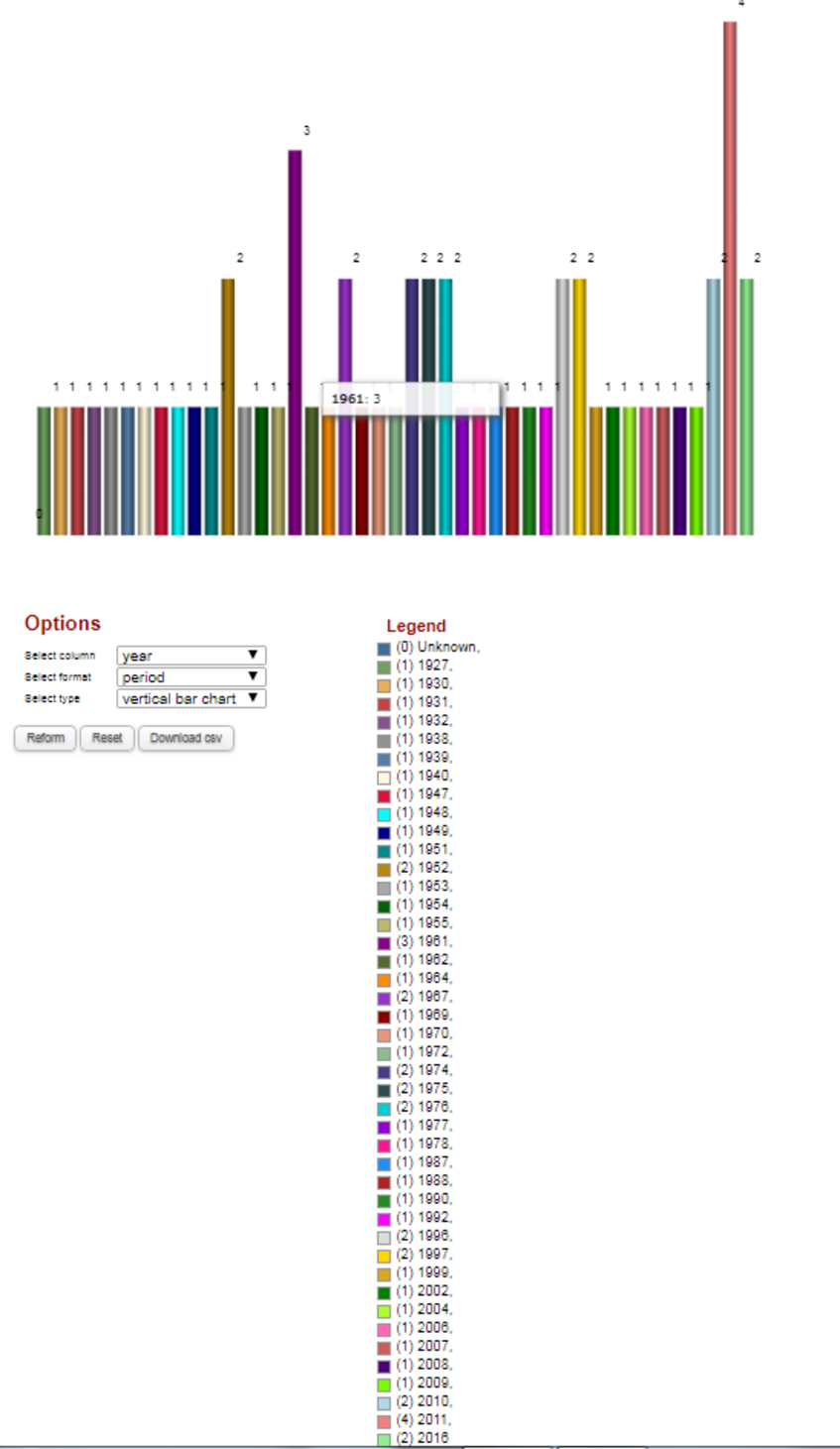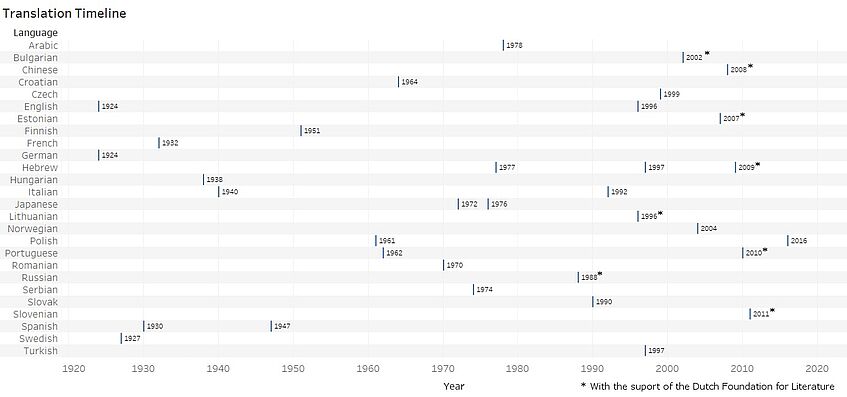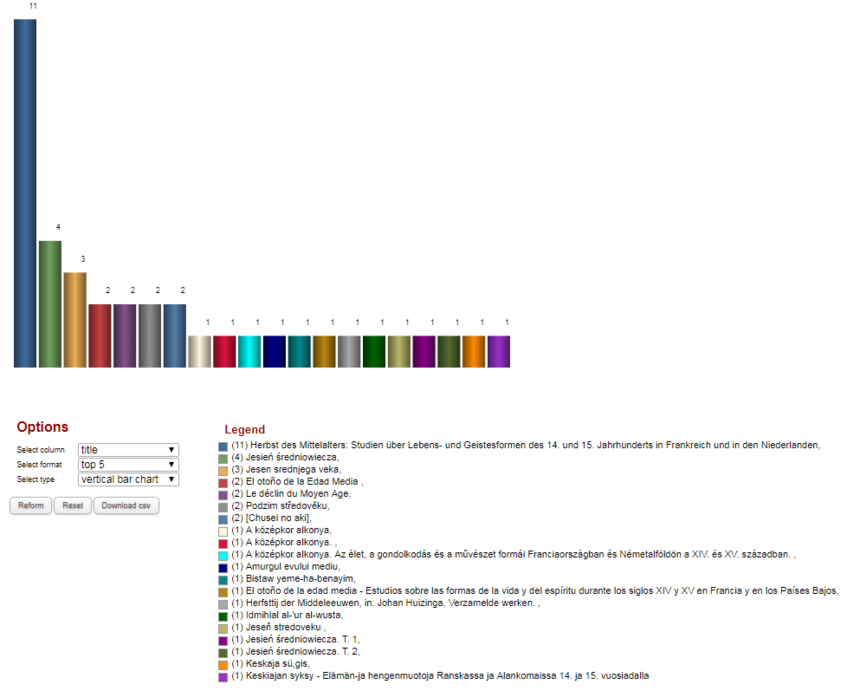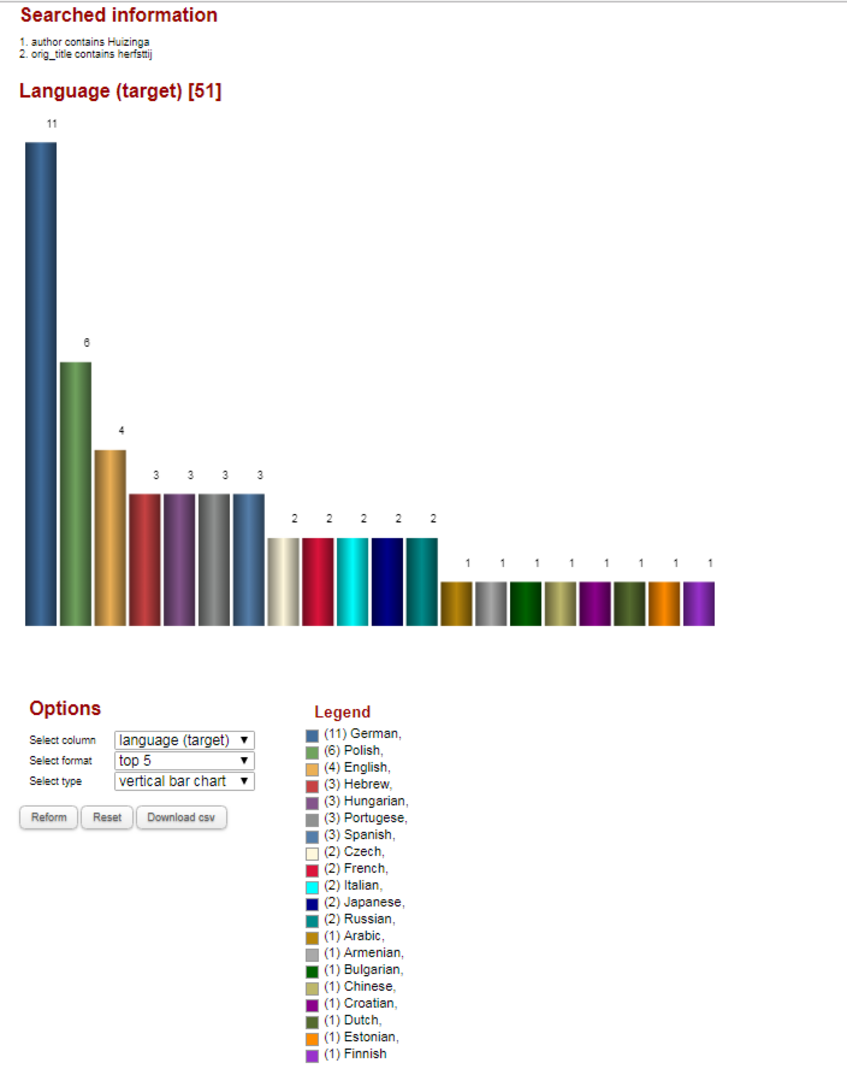Herfsttij der Middeleeuwen in Translation
Herfsttij der Middeleeuwen has been translated into 26 languages. The book has even been published in two different versions in several of these languages (English, Hebrew, Italian, Polish, Portuguese). Such retranslations are indicative of the enduring significance of Herfsttij and of the need to update the work for new readers. Koskinen and Paloposki have written the following in this regard, following Venuti: “Retranslating and literary canon formations are indeed mutually dependent: retranslations help texts in achieving the status of a classic, and the status of a classic often promotes further retranslations.” (Koskinen and Paloposki 2010: 295) A new German translation is currently being prepared by Annette Wunschel for a series of Huizinga editions by Wilhelm Fink Verlag and the book is currently also being retranslated into Spanish. A third English translation is likewise being prepared. The 21st century has seen several new translations of the work; the Bulgarian, Chinese, Estonian, and Slovenian translations of Herfsttij were all published after 2000. The Dutch Foundation for Literature plays a prominent role in these projects. According to their own database, they have subsidized ten translations since 1995.[i] The Dutch government thus continues to promote the international dissemination of Herfsttij through this foundation.
Source:
Brems, Elke and Réthelyi, Orsolya. 'Rescuing something fine. Huizinga's Herfsttij der Middeleeuwen as World Literature.' In: Theo D'haen (red). Dutch and Flemish Literature as World Literature. London/New York: Bloomsbury Academic, 2019
[i] Before 2010, the subsidies were provided by the predecessor of the Foundation for Literature, the Dutch Literary Production and Translation Fund (NLPVF).

Publication history of Herfsttij der Middeleeuwen in translation. Data from the DLBT.
Visualizing Herfsttij's Publication History


Herfsttij der Middeleeuwen in translation: selection of title choices. Data from the DLBT.

Herfsttij der Middeleeuwen in translation, data from the DLBT.
